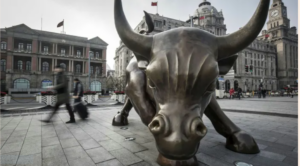Morgan Stanley stiller et temmelig centralt spørgsmål: Er de vestlige markeder ude af trit med den økonomiske virkelighed? Bankens strateg, Andrew Sheets, gør opmærksom på, at der er en stor forskel på USA og andre markeder. Mens inflationen er høj i USA og Europa, er den lav i Asien, og mens renten er holdt kunstigt nede i USA og i eurozonen, er der sket kraftige stigninger andre steder. Aktiepriserne er høje, men de er langt lavere i andre markeder end i USA. Når der er kriser, forsøger markederne at komme op med enkle historier, men nu går det måske ikke mere. Der er for store forskelle på de globale markeder til, at man bare kan komme med enkle forklaringer.
A Different Story for Global Markets
Welcome to Thoughts on the Market. I’m Andrew Sheets, Chief Cross Asset Strategist for Morgan Stanley.
While Russia’s invasion of Ukraine has implications for financial markets, it has bigger implications for people. Our expertise, however, is in financial markets, and so that’s where we’ll be focusing today. For those that are most negative on the market right now, the refrain is pretty simple and pretty straightforward. Assets are still expensive relative to historical valuations. Inflation is still high and it’s still rising. And central banks are still behind the curve, so to speak, with lots of interest rate increases needed to bring monetary policy back in line with the broader economy.
What I want to discuss today, however, was how different some of these concerns can look when you move beyond the United States.
Let’s start with the idea that assets are expensive. Now, this clearly applies to some markets, but less to others. Stocks in Germany, for example, trade at less than 12 times next year’s earnings, Korean stocks trade at 10 times next year’s earnings, Brazil, it’s 8 times. And many currencies trade at historically low valuations relative to the U.S. dollar.
Next up is inflation. While inflation is high in the U.S. and Europe, it’s low in Asia, a region that does account for roughly 1/3 of the entire global economy. What do I mean by low? U.S. consumer prices have increased 7.5% relative to a year ago. Consumer prices in China and Japan, in contrast, are up less than 1%.
My colleague Chetan Ahya, Morgan Stanley’s Chief Asia Economist, notes that these differences aren’t just some mathematical illusion, but rather reflect real differences in Asia’s economy and policy response.
Finally, there’s the idea that central banks are behind the curve, so to speak. Now, the hindsight here is a little tricky, as the Federal Reserve and the ECB were dealing with enormous uncertainty around the scope of the pandemic for much of last year. But what’s notable is that not all central banks took that path. Central banks in Chile, Brazil, Poland and Hungary, just to name a few, have been raising interest rates aggressively for the better part of the last 12 months.
In times of crisis, markets often try to simplify the story. But the challenges facing global markets, from valuations, to inflation, to monetary policy, really are different. As events unfold, it will be important to keep these distinctions in mind.




